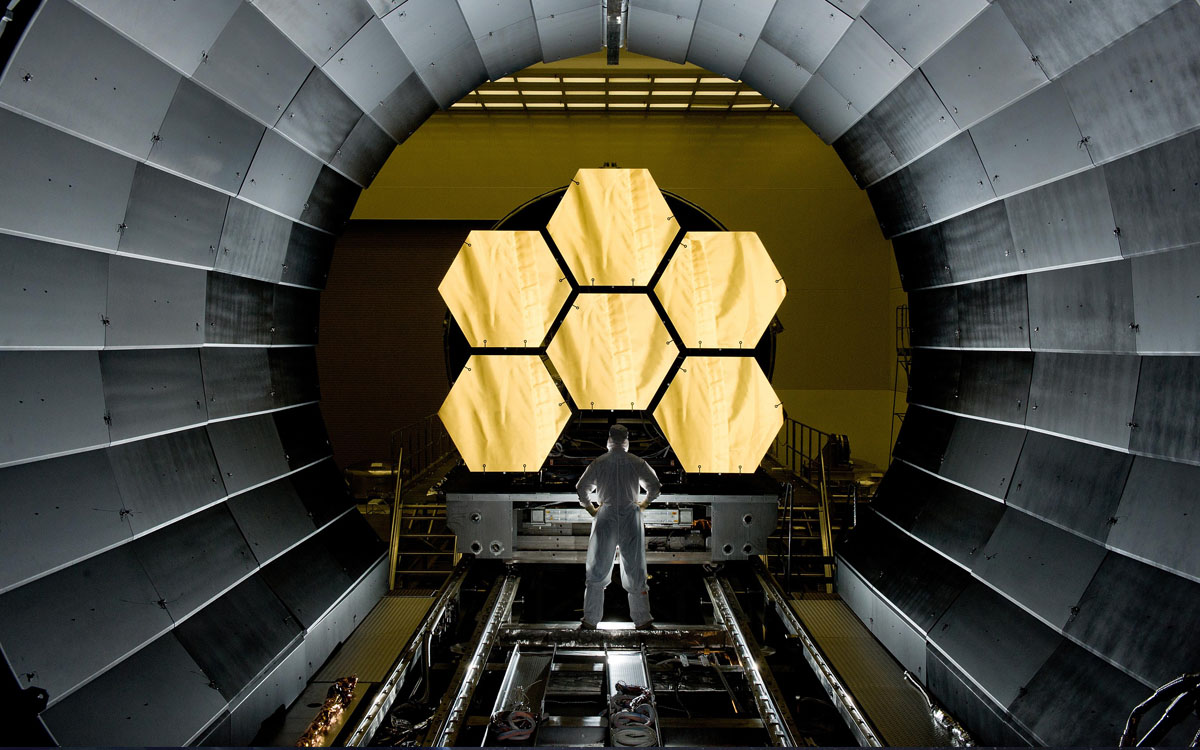jwst: gambling with the future of space science

The planned James Webb Space Telescope seems headed for three possible outcomes when it’s launched into space. It could be a major source of new science for astronomers and astrophysicists, giving new views of the early universe and imaging stars and galaxies in unprecedented detail. It could be an underwhelming, more or less workable telescope that will at best equal Hubble, allowing deep space research to keep going forward, but at a far slower pace than desired. Or, in the worst case scenario, it could be a very expansive and spectacular flop to the tune of at least $6.5 billion. And should that worst case scenario come true, astronomy will suffer for nearly a decade afterwards because JWST’s planned orbit places it nearly a million miles away, too far for repair missions like the ones launched to fix and upgrade Hubble. And so it seems that the biggest breakthroughs for space exploration and research rest on a very expensive and very dangerous gamble.
Now, I’m sure that the scientists and engineers working on JWST are extremely talented and dedicated to the task before them, but unfortunately, technology rarely works the way you want it to work. If it did, you wouldn’t need to train more than a handful of engineers every year and your company wouldn’t need an IT department because everything made of metal, plastic, and circuitry would just do what it’s supposed to. In the real world, something as insanely complex as a telescope with delicate optics and exquisitely sensitive instruments has a very nasty habit of being prone to glitches. A little too much shaking during liftoff and something might bend or shift a few millimeters to the left, rendering some key feature of the telescope unusable. Of course the team tasked with building these tools is well aware of it, but the best they can do is to try and build in some sway or tolerance into the system and hope for the best. It’s simply impossible to completely engineer the risk out of a complicated system and asking JWST’s builders to do that is like asking Sisyphus to get his rock to the top of the hill. Making their task even more challenging is the fact that the telescope is being asked to do too much, compounding the potential failure points and risks, which means it’s ultimately more likely to underperform.
Since the second Lagrange point, or L2, is a terrific place for a telescope designed to see very distant objects because it’s cold, dark, and far away from any interference from the upper layers of Earth’s atmosphere, when the plans for JWST became reality, everybody and their mother in law wanted to run add an instrument to it. If this kind of once in a generation opportunity presented itself, you probably would too because you don’t know when or even if the next mission to the L2 point could be launched. Now, the JWST has to include the projects of astronomers and physicists who are pinning their hopes and dreams for a decade of research on a single successful spacecraft launch. And that’s a dangerous game to play. Overloading a telescope with tools, then desperately hoping that nothing will break means that the craft will be over-burdened, over-engineered, cost a lot more than it’s supposed to, and the consequences of a glitch will be catastrophic for entire scientific labs, since there won’t be other satellites in the pipeline to try their experiment again. It would’ve been easier, more cost-effective, and safer to launch multiple satellites capable of working with each other, or focused on a very specific set of tasks. True, launching a $200 million craft for two or three scientific teams would be a lot more expensive than adding their $2 million experiment to an existing one, but you also have to consider that if this experiment goes awry, it could now jeopardize several billion dollars worth of instruments.
Ultimately, I wish nothing but the best to the JWST project and I’d be thrilled if the telescope works perfectly as it settles into its orbit and starts observing the sky. But it would be very disheartening if we suddenly found out that the mirror was shaped with a minor imperfection that wasn’t corrected (as happened to Hubble), or that a major glitch with one of the add-on experiments interfered with its primary mission. Placing a decade of future research projects and studies into a single spacecraft is a very risky strategy. Let’s hope it pays off because if it doesn’t, astronomers will be limited to ground-based telescopes for the foreseeable future. So yeah NASA, no pressure. You just have an entire generation of space science riding on a single project. No big deal…





